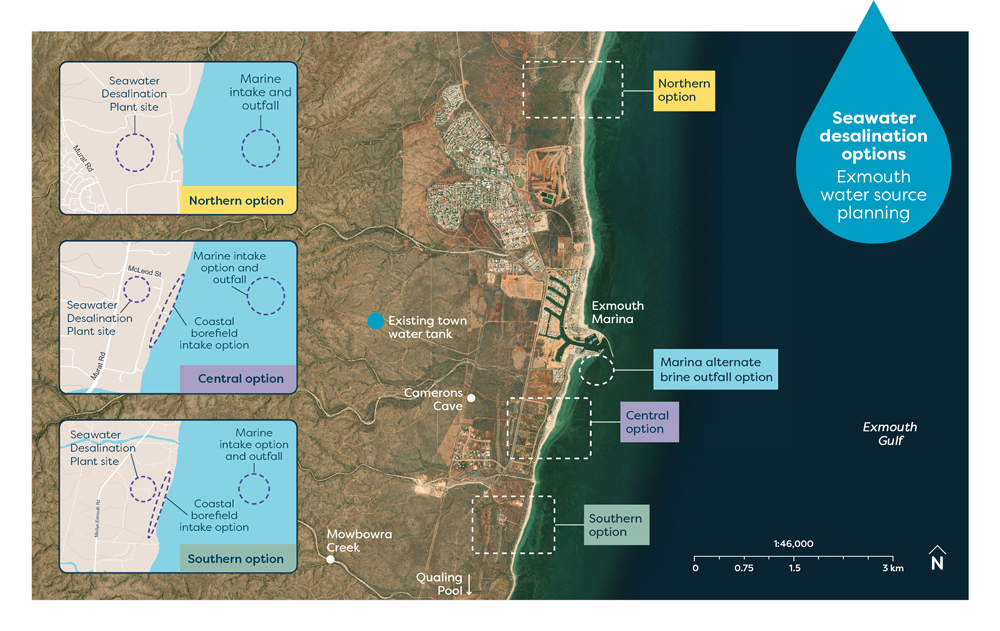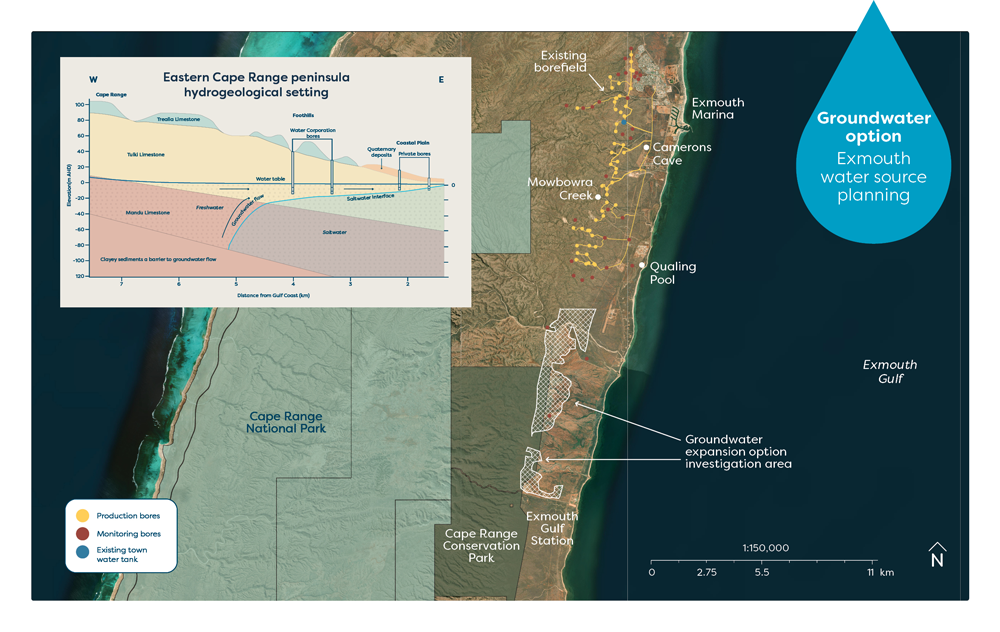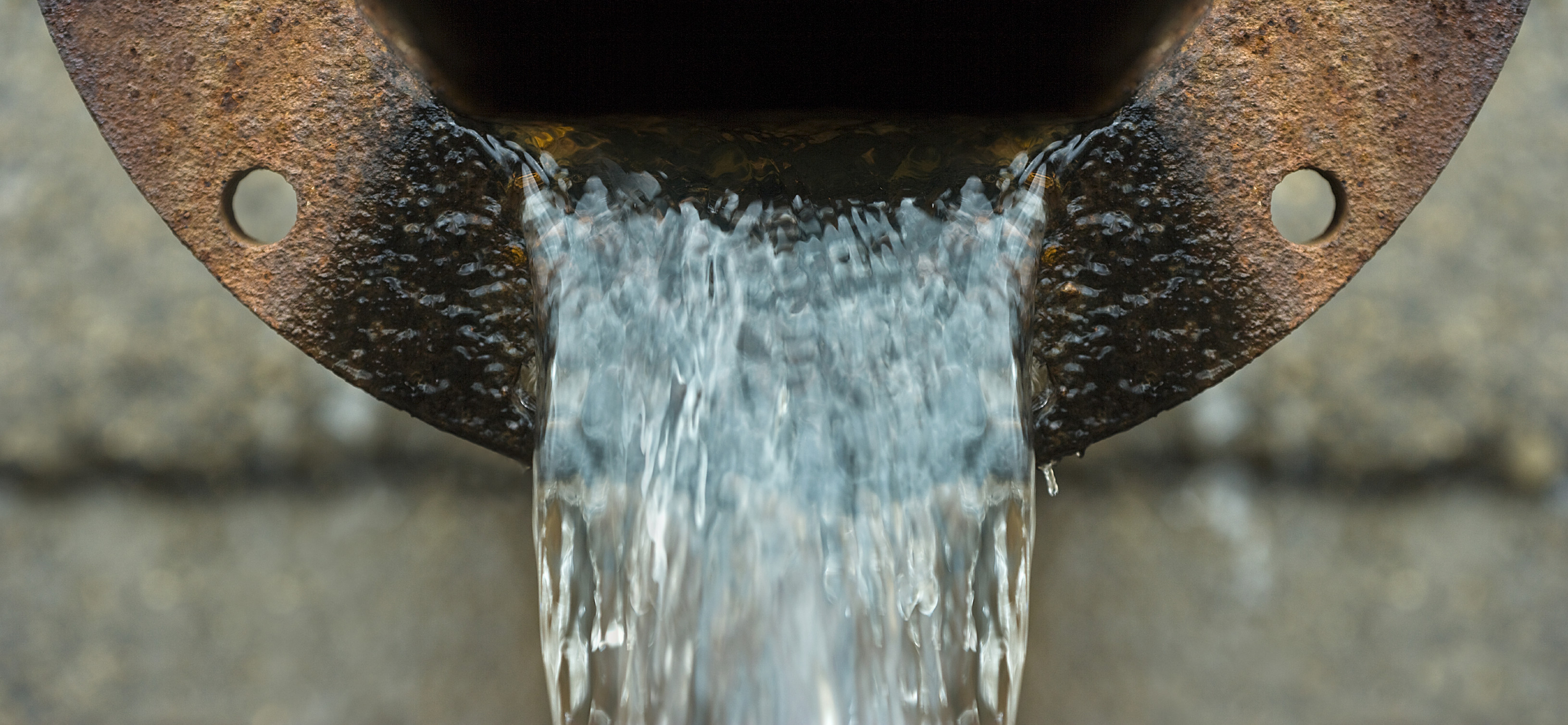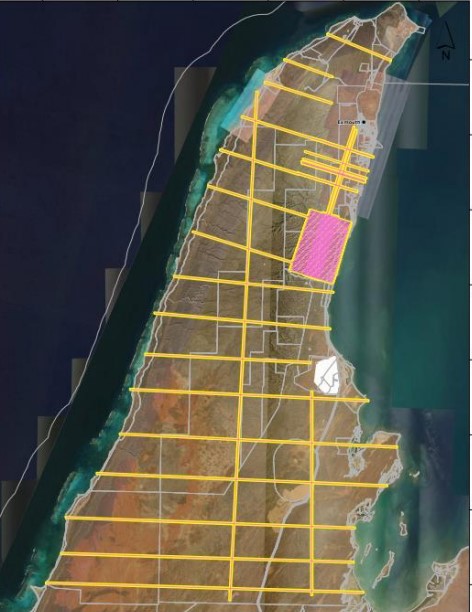Exmouth water source planning
Project goal:
Secure Exmouth's drinking water supply through to 2060
Status:
In planning
Delivery Date:
Decision on preferred desalination location planned for early 2026
What's happening?
Water Corporation have been working to identify a new drinking water source for Exmouth, to meet projected future demand. Following extensive investigations and stakeholder engagement, seawater desalination has been selected as the preferred new source.
A new seawater desalination plant will cater for the impacts of climate change and population growth. It will secure Exmouth's water supply for the future.
Why seawater desalination?
Climate modelling forecasts hotter temperatures, more extreme weather events, and less reliable rainfall for the region. Seawater desalination is a rainfall-independent source able to supply the amounts of water required for a growing town. Exmouth is expected to require an additional 1.5 billion litres to secure the water supply to 2060.
Read more about seawater desalination in our detailed seawater desalination information sheet.
Seawater desalination allows us to reduce our reliance on groundwater sources in the long term and protect the unique environmental values of the area.
Where does Exmouth currently get its water?
Exmouth's water is supplied from production bores which draw from a groundwater aquifer. The borefield extends for 10km, comprising 6 bores within the Exmouth Town Groundwater Subarea and the remaining 28 bores within the Exmouth Central Groundwater Subarea, located further south of the townsite (see map).
The existing borefield is designed and operated to take groundwater at low rates to prevent saltwater intrusion and maintain conditions to support stygofauna (underground aquatic fauna) habitat across the borefield.
Water Corporation draws water under a licence from the Department of Water and Environmental Regulation (DWER).
What locations are being considered for seawater desalination infrastructure?
Three potential site options were identified in early planning. See the map below.

What source options were considered as part of this planning?
The two main options considered as part of planning for Exmouth's next drinking water source were:
- A rainfall independent small-scale seawater desalination plant.
- A new borefield in the groundwater sub area to the south.
A new borefield has been ruled out due to insufficient volume to meet long-term demand, climate dependence, and concerns over potential environmental and cultural impacts.
What are the next steps?
Planning is in the investigations stage, and we’re committed to getting this right. Throughout the next stage, we’ll further progress investigations to confirm a location for a new seawater desalination plant.
We’ll also continue to work with stakeholders and the community as we progress towards a decision on the most appropriate location for future infrastructure.
How can I be involved?
Project timeline
- Public engagement on next source
- 2023 - 2025
- Site investigations (engineering, marine & environmental)
- 2024 - 2026
- Decision on next source location required
- Early-2026
- Public engagement on site and pipeline route
- 2026 - 2028
- Concept design of infrastructure
- 2026 - 2027
- Environmental approvals
- 2026 - 2028
- Design and construction of next source
- 2028 - 2030
- New source required for Exmouth
- 2030
Water Corporation is currently licensed to take up to 1.032 billion litres per year from the Exmouth borefield, which relies on heavy episodes of rain in summer/autumn, and winter rainfall, for replenishment. Climate modelling forecasts hotter temperatures, more extreme weather events, and less reliable rainfall for the region, which may impact groundwater availability.
Exmouth is expected to require an additional 1.5 billion litres to secure the water supply to 2060.
Water Corporation has licenses with the Department of Water and Environmental Regulation to abstract water from two groundwater subareas. This is through 6 bores within the Exmouth Town Groundwater Subarea and 28 bores within the Exmouth Central Groundwater Subarea, which is located further south of the townsite.
These licenses are due for renewal in January 2027. There are three other groundwater sub areas in Exmouth, to the north, south and to the west of the existing borefield, from which Water Corporation does not abstract water.
Demand for water in Exmouth has accelerated in recent years, alongside population growth and increased tourism.
To manage demand for water in Exmouth, we have an active demand management program in place to help improve water efficiency. This has recently included:
- plumbing and irrigation services to help customers find and fix leaks
- comparative use letters to encourage waterwise behaviours
- waterwise product offers, including the free waterwise showerhead swap program
- marketing and education activities
We’ve also recently completed a roll-out of new smart water meters to all properties in Exmouth. Customers can now log in to their Water Corporation online account to view their water use and identify hidden leaks. We continue to work with high water users in Exmouth to manage demand and promote water efficiency.
Demand for water is still expected to be close to, or exceed, our current groundwater license limit in coming years until a new source is available. As a result, Water Corporation will also be making a license allocation increase application to DWER, to temporarily increase the amount of water we can supply from the existing groundwater borefield, until a future desalination plant is able to be delivered.
Water Corporation is the principal supplier of water, wastewater, drainage and some bulk irritation services in Western Australia to homes, businesses and farms. We are regulated by DWER and Department of Health. Supply of water is licensed by the Department of Water.
On average, new sources typically take up to 5-6 years to deliver from the current stage we are at, through to construction and commissioning. Exmouth has complex ecological and cultural values that may impact this, and all timeframes are subject to funding and government approvals.
As we progress our investigations and engagement, we will be able to improve our estimate of a delivery timeframe.
We are committed to keeping the local community updated and providing opportunities for feedback. We’ve engaged extensively with stakeholders, and the community, since 2023.
This has included meetings and correspondence with Government agencies, the Shire of Exmouth, Traditional Owners, environmental and commercial groups, fisheries stakeholders, and face to face opportunities for the local community.
Our project team will next host face to face drop-in sessions in Exmouth in August 2025, so we can hear your thoughts and answer any questions you may have.
We’ll continue to work with stakeholders and the community as we progress towards a decision on the most appropriate location for future infrastructure.
See the map of the groundwater investigation areas below

Seawater desalination
Seawater desalination works by separating water molecules from seawater. First, seawater is screened and pre-treated to remove large particles like seaweed and sand. Next, the seawater is fed through reverse osmosis membranes, where water molecules pass through, and the remaining seawater becomes saltier. About 40-45% of the seawater becomes freshwater for drinking and the remaining 55-60% is brine. The brine is nearly twice as salty as the original seawater.

- Location: The intake is usually placed in deep water where the water quality is good and environmental impact is minimal. The intake pipeline does not have to be near the plant. However, the longer the pipeline, the higher the construction and maintenance costs.
- Design: It is designed to handle large volumes of water and withstand harsh marine conditions.
- Environmental impact: Care is taken to minimise impacts to marine life by using protective structures, such as velocity caps (to slow the intake speed) and screens (to keep out larger marine life). We complete habitat surveys to identify areas of bare sand. Low disturbance installation methods such as horizontal directional drilling are considered.
- Location: The diffuser is generally located offshore, away from sensitive marine habitats and in deep water where brine can be effectively dispersed. The diffuser pipeline does not necessarily need to be near to the plant; however, the longer the pipeline is the more it costs to construct.
- Design: The diffuser is designed to minimise environmental impacts, often using multiple diffuser ports to increase brine dilution and spread. Instead of releasing all the salty water from a single point, the ports spread it across multiple locations, promoting faster mixing and more efficient dispersion over a larger area.
- Environmental impact: Brine dispersion modelling is done prior to construction to ensure the diffusers are designed for the location. This ensures we comply with the Environmental Protection Authority’s environmental quality framework for marine discharges. We complete habitat surveys to identify areas of bare sand. Low disturbance installation methods such as horizontal directional drilling are considered.
- Regular environmental monitoring of the water quality and marine habitat is completed to ensure compliance with licence conditions and environmental standards.
Environmental monitoring and data collection starts before a site is selected for any seawater desalination plant. This information helps us design and position the infrastructure to minimise environmental impact. It also forms part of the environmental impact assessment and approval application that is sent to the Regulator.
Monitoring of the marine environment includes:
- water quality monitoring of the ocean including existing contaminants, salinity, temperature and dissolved oxygen levels (up to two years)
- benthic habitat mapping, which is the process of identifying and mapping underwater environments, specifically the seafloor and the organisms that live there. This includes mapping of reefs, troughs and freshwater seeps
- targeted surveys of marine flora and fauna, where required.
In addition to monitoring, we also complete the following studies:
- desktop review of existing historical data and literature
- ecotoxicity testing in a laboratory, which tests whether the brine could have an impact on the larvae and adults of local marine species
- we engage with Traditional Owners and other community and industry stakeholders to identify their key uses, and values and concerns.
We held our second round of community drop-in sessions in Exmouth in August. Since then, we’ve been continuing our assessment of a range of factors to help guide the selection of a preferred location for the proposed seawater desalination plant.
We’ve completed several studies across the three sites and marine investigations are ongoing. Check out our latest project update for a list of the studies completed so far.
Our studies on local habitats and activities in the area help us design infrastructure that works with the environment and reduces potential impacts.
We’re working to complete our review of possible sites by the end of the year. In early 2026, we’ll share the results with you and confirm the preferred location for the proposed seawater desalination plant.
We recently shared that seawater desalination will be Exmouth’s next major water source. To share more about this, our team held two drop-in sessions on Friday, 8 August and Saturday, 9 August 2025.
It was great to meet so many of you. We really appreciated the time you took to speak with us, share your thoughts and ask questions. Your input helps us better understand what matters most to you about the project.
If you weren't able to attend either of the sessions, please get in touch using the contact details on the webpage and we would be happy to provide further information.
July 2025
Following extensive investigations and stakeholder engagement, seawater desalination has now been selected as the preferred new water source for Exmouth.
A new seawater desalination plant will cater for the impacts of climate change and population growth. It will secure Exmouth's water supply for the future.
Throughout the next stage of planning, we’ll further progress investigations to confirm a location for a new seawater desalination plant. See the map below of the potential desalination locations identified in early planning.

You can drop by to see the project team at Ross Street Mall, near Exmouth IGA:
- Friday 8 August, 2:30pm-4:30pm
- Saturday 9 August, 9:30am-11:30am
Our team will be there to listen and answer any questions you have.
Or, email the Community Engagement team to share feedback or ask a question.
18 June 2025
In December last year, we advised we were starting marine investigations in Exmouth Gulf. These investigations gather information to identify a preferred location for a potential Exmouth Seawater Desalination Plant (SDP), including marine pipelines. The information gathered is also used as part of an Environmental Impact Assessment.
In May, we started seabed (benthic) habitat mapping and freshwater seep surveys. The early results of these investigations guide us in choosing a favourable site, particularly by avoiding sensitive marine habitats like coral and seagrass.
Other investigations include:
- seawater quality sampling and profiling (12-24 months)
- continuous water quality monitoring using submerged loggers (24 months)
- current and wave data collection (up to 12 months)
Regular monitoring will take place for up to 24 months. There will be extra monitoring following certain weather or environmental events, such as after a cyclone or during coral spawning.
5 December 2024
We will soon be commencing marine investigations in Exmouth Gulf. These investigations will help us gather information to identify a preferred location for potential Exmouth Seawater Desalination Plant (SDP) pipelines, understand the operating risks of the proposed location and to inform an environmental impact assessment. Additionally, the water quality data will inform potential treatment processes required for a proposed SDP.
Work will begin in December 2024. Further sampling and data collection will take place on a quarterly basis for up to 24 months, with some potential event-based sampling following certain weather or environmental events. Check out our marine investigations fact sheet on the webpage for more information.
10 September 2024
It was great to meet with so many of you at our community drop-in sessions at the end of August. We spoke to over 130 people over the two days and got really great insight into your thoughts on the investigation areas for the groundwater and desalination options.
If you weren't able to attend either of the sessions, please get in touch using the contact details on the webpage and we would be happy to provide further information.

12 August 2024
The project team will be hosting two drop-in sessions in Exmouth on these dates.
- Ningaloo Centre, Mandu Mandu West Room on Friday 30 August from 12.30pm - 4.30pm and
- Ross Street Mall, near Exmouth IGA, Saturday, 31 August from 8am - 12pm.
Drop by to find out more about these investigations, we look forward to seeing you there!

8 May 2023
Department of Water and Environmental Regulation (DWER) and Water Corporation have commissioned an aerial electromagnetic (AEM) survey in Exmouth to detect groundwater sources and support future water supply planning work.
This information will be used to support DWER’s water allocation planning and Water Corporation’s future water source planning investigations for the Exmouth water supply scheme.
Full details via the Department of Water and Environmental Regulation (DWER) aerial electromagnetic (AEM) survey (May/June 2023) document.

Carina Harris - Community Engagement Specialist
Related documents
- Exmouth water source planning - Project Update - December 2025 PDF 204KB
- Exmouth water source planning - Project Update - July 2025 PDF 238KB
- Exmouth water source planning - detailed desalination information sheet PDF 640KB
- Exmouth Water Source Planning - Project Update - June 2025 PDF 229KB
- Marine investigations fact sheet - December 2024 PDF 243KB
- Project fact sheet - 2023 PDF 197KB
